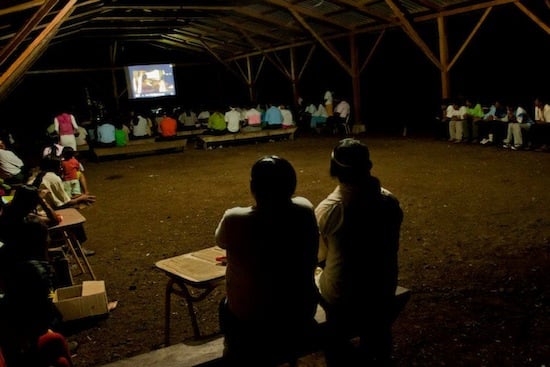The Achuar of Ecuador and Peru Vision Together to Safeguard the Amazon Rainforest
[post_thumbnail size="550"]
At this moment, the Achuar indigenous people of Ecuador are at the verge of the same reality the Achuar of Peru first encountered 40 years ago: imminent oil exploitation within 100% of their territory, and the unavoidable degradation this brings to the environment, their society, health, and way of life. Having said this, the Achuar of Ecuador are in the midst of perhaps the most important crossroads they have ever faced.
Visioning the future to define next steps
As a dream culture, the Achuar make decisions based on their dreams, and the visions they experience through their ancestral spiritual practices. As such, last month Achuar leaders in Ecuador planned a 4-day encounter with Achuar leaders of Peru with the goal to share experiences and visions regarding their future.
The Achuar are well aware of the socio-environmental disaster oil exploitation has brought to the indigenous peoples of the Amazon rainforest. These communities are one with their land, and their traditions and way of life are probably the only way to maintain the delicate and mysterious balance the rainforest needs to remain pristine. The Achuar of Peru were not able to keep it that way nor any other suitable way, so today a large part of their territory (oil lot 1-AB) is a poor and underdeveloped region that lacks basic services. In addition to this, it is a heavily polluted area, the people are sick, and their rivers are dying.
Our role in the meeting

15 years of trajectory working with the Achuar people granted us an invitation to this encounter. We contributed to the agenda by providing information about indigenous collective rights granted by international laws, and projected two films, “La Travesía de Chumpi” (by Fernando Valdivia) and “Una muerte en Sion” (by Adam M. Goldstein). Both films address the effects of oil exploitation in Achuar territory.
The president of the Achuar Nationality of Ecuador (NAE) and the president of the Ecuador and Peru Binational Coordination (COBNAEP) were in attendance, in addition to representatives from 2 Peruvian communities (Sansacocha, Yakuntich and Mashumar), 5 Ecuadorian communities (Washinta, Tsapapentza, Saum, Setuch and Wishimi), and 3 associations (Kaitach, Ushim and Guyucamentza). Encounters like this are also a celebration because they are strengthening the bonds between the Achuar living in both countries, and creating synergies many did not anticipate today.